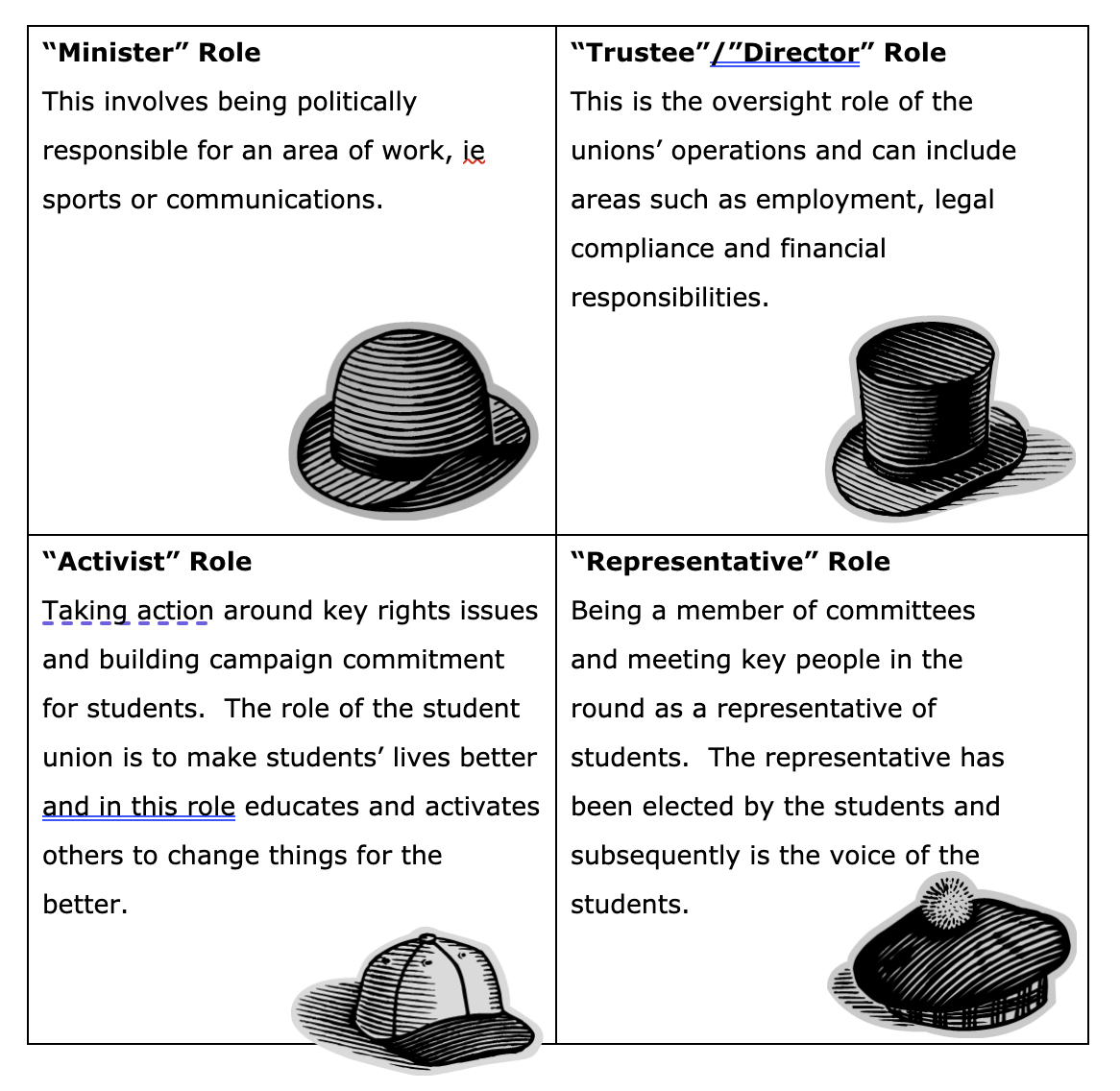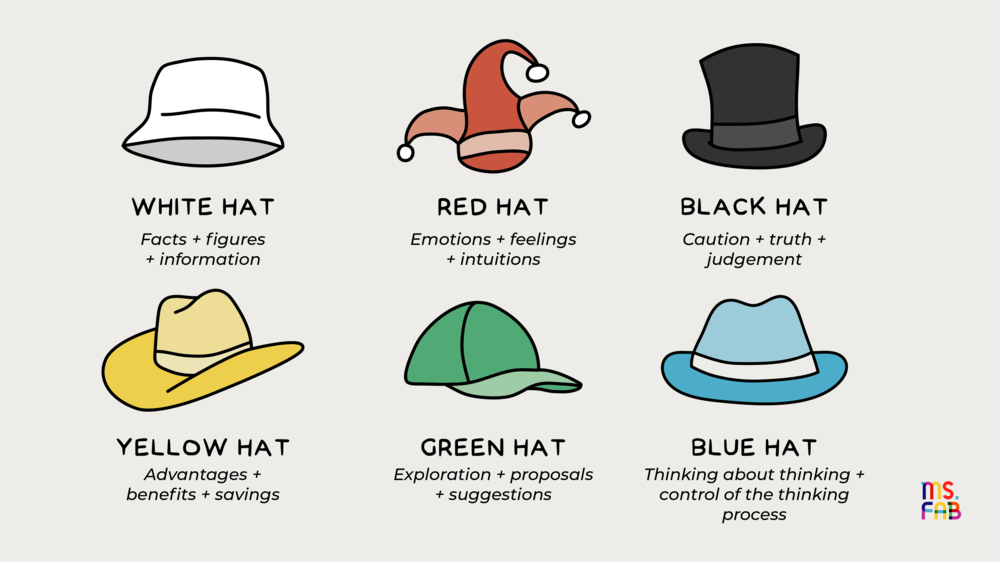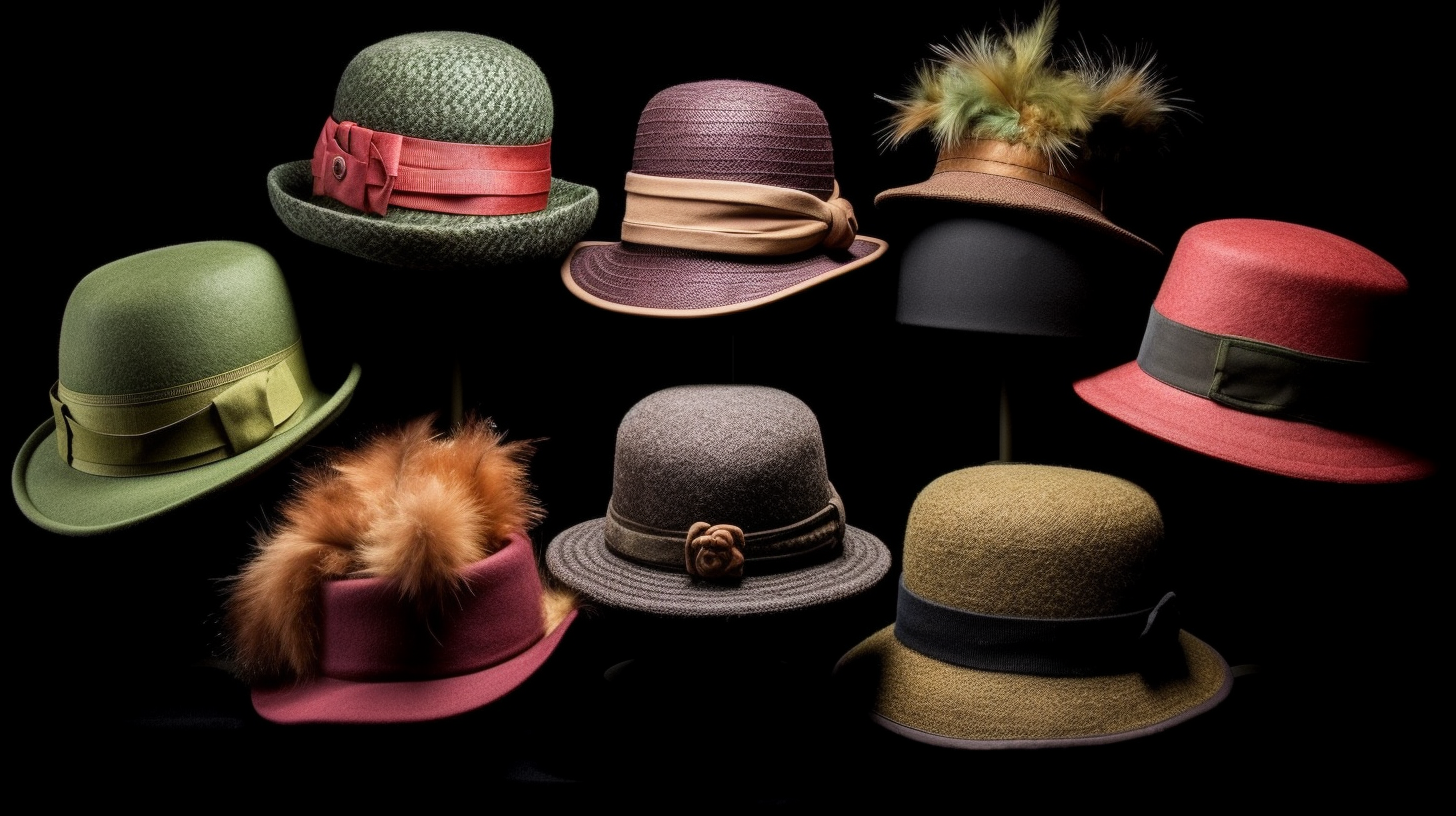Colleagues of a certain vintage will have memories of the Adelphi hotel in Liverpool.
Sometimes blurred by alcohol and sometimes suppressed by choice, there are still occasions that I can recall with clarity.
One such event was in the summer of 2006. SUs were gathered to see a session led by an NUS staff member about officer roles and explaining what being a sabbatical meant.
Jim Dickinson (for it was he) outlined the four elements: Campaigner, Representative, Trustee and “Portfolio”. This was well received – and some 17 years later is still embedded through SU inductions throughout the land.

In those days there wasn’t Wonkhe to easily share ideas (there was barely internet on mobiles) and so such events were highly anticipated chances to get new practice.
The idea was a simple one. Riffing off Edward De Bono’s Six Thinking Hats, the theory was that new officers don’t immediately appreciate the complexity of the role. Exercises invite new officers to both consider the sorts of activities that might be undertaken when wearing each hat, and the way in which a particular objective might be pursued or need to be considered when wearing each hat.

I’ve checked with Jim and neither of us know if the hats were his idea first or from a local SU (please let us know if you’ve got a pre 2006 millinery briefing) but it’s worth considering if they’re still fit for purpose.
Hold on to your hats
It’s mid June, and if you’re reading this and cursing me because you have to rewrite day one of your induction then don’t prepare an effigy just yet (or at least not because of this blog).
There are useful elements in defining the role in the 4 aspects above. Plenty of students (and therefore candidates) won’t be aware of all parts of a sabbatical role.
You’ll see the portfolio of coming to sports committees but not the representation at the timetabling meeting to keep Wednesday free for sports. I’ve never met anyone who knew how many meetings a VP Education goes to and may just think they do course rep training.
And of course, I’ll be spending the summer doing trustee inductions with officers who skipped over the line about legal responsibilities and corporate governance in the election briefing.
Student members of institution governing bodies and, equally, university appointees to SU boards will have to think about avoiding conflicts of interest and which hat they are wearing at that point.
Legal requirements aside, I’m pretty relaxed about people learning about the role through the start of their year – it’s like any other job in that respect. What’s important is the discussion about how the different parts interact.
You can (and must) leave your hat on
The first hat problem comes with the idea that you’re only wearing one at a time. You aren’t like children TV’s Mr Benn from the 80s or Ben 10 from the 00s – momentarily choosing a form for the issue in front of you. It’s more complicated than that.
That sports officer sitting on an Estates committee may do so because their role makes the best fit (portfolio hat). During the meeting discussion turns to catering provision.
This isn’t in the portfolio role but like all good officers she’s aware of the union’s policy and says a better provision of vegetarian food is needed (representative hat).
Conscious that a new retail outlet on campus might take away from the union’s income she suggests the SU be invited to tender (Trustee Hat). That’s 2 hats worn at the same meeting which she’s only in because of a third.
To please the analogy, after the meeting she slips off and joins a protest outside the university cafe demanding better pay for students (activist hat).
Political leaders are expected to judge competing priorities. It’s literally the job. It’s tough and you have to explain your choices but sometimes you have to represent views outside your portfolio or choose between student interests.
A worry about perceiving the different elements as hats is the natural assumption that you’re wearing one at a time and officers should be aware this isn’t the case.
All around my hat
Hats are common in officer induction but I’ve never heard someone use it in a staff role. Most staff positions will have actions that are administrative, others that are strategic and even some that represent a view of the organisation to others. In effect, staff too wear multiple hats.
The strongest unions invest in the relationship between its multiple parts including between staff and officers. An approach that recommends collaboration probably isn’t going to frame one group as homogeneous in their work and the other as an odd hydra of multiple hat wearing sabbaticals.
Where did you get that hat?
A political choice unions have to make regularly is how power is dispersed in their unions.
Community organising models are now well established in SUs. There was a trend in the mid 2000s of removing part time officers to give more power to student groups.
In later years as student time became more pressing people felt it was better to have fewer leaders and to take the burden from students. In recent years the need for devolved leadership and the organising model is back.
Despite these changes what hasn’t seemed to alter in this period are the officer hats. An SU has a leadership model that puts the onus of resolving conflicts in representation needs on an officer (armed with appropriate data pack from the insight team) is demonstrably different to an SU who have committee led structures to sort this out.
In the former our officer may need skills in analysis and political management. In the latter they’ll need skills in facilitation and interviewing students to get views from them. The “hats” are different, they serve a representative role but are completely different shapes.
Deliberative democracy models also take more time – as the name suggests. An officer can shift hats quickly and where they are given responsibility this is of use for swiftly changing situations.
I love deliberative models for broadly consensual or slow moving topics – but there will always be times someone needs to decide about an external speaker today or deal with an issue that has blindside them in a university meeting. Again different skills and different hats.
Wherever I leave my hat, that’s my home
Wherever the model in 2006 came from, it has its uses. New positions are confusing and being able to visualise how they are made up is positive.
Just make sure the explanation fits your structures and the simplicity doesn’t mask the bald truth – that being an officer can be complicated.


















